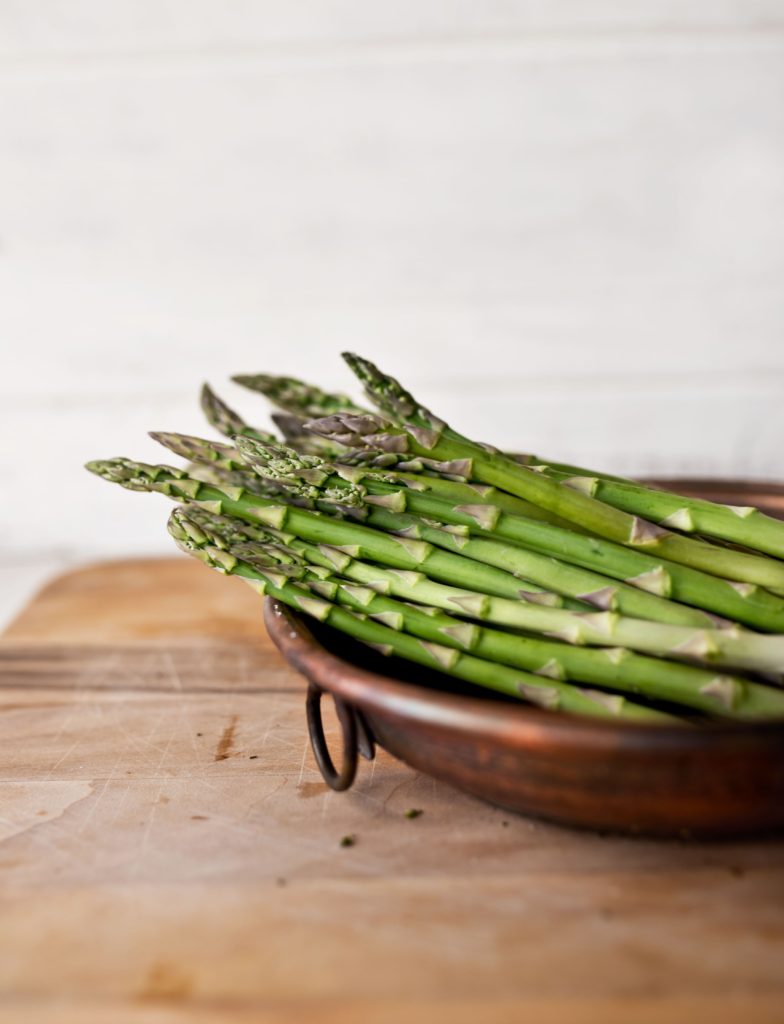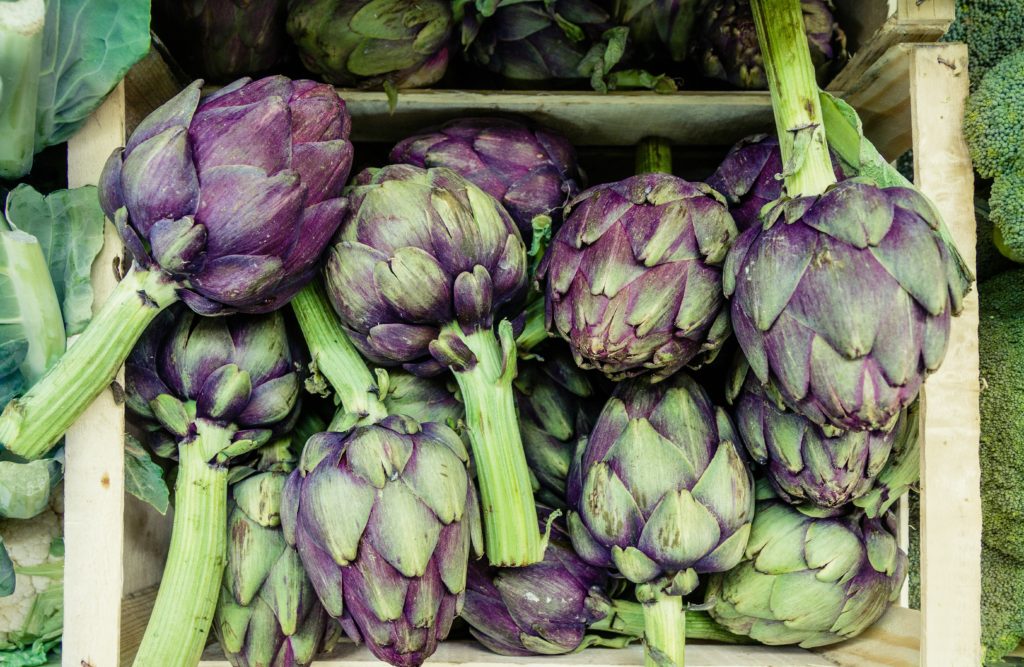When it comes to healthy eating, seasonal foods have so many benefits to offer. Eating seasonally not only offers great taste and nutritional value, it usually offers a lower price per pound and the opportunity to support local farmers. That’s what I call a win-win. 🙂
To help you get started, below is a list of five in-season foods and ideas on how to incorporate them into your weekly diet. Oh, and by the way, I included a picture of strawberries above because they are in season in the Spring and early summer. Bonus!
Peas
Peas are a wonderful plant-based source of protein. A 100-calorie serving has more protein than a hard-boiled egg or a tablespoon of peanut butter. They are a great source of vitamin C and vitamin K. Try adding peas to pastas, rice dishes, casseroles, salads, or eating them steamed with a pat of butter. On cooler nights, ease the chill by pureeing peas and making a soup.
Asparagus
This springtime gem is a good source of vitamin K and folate. It’s also very versatile. Asparagus can be roasted, grilled, boiled or even sautéed. It adds great flavor to a breakfast quiche, can be used in a lunchtime Nicoise salad, makes a great side next to a grilled piece of salmon or steak, and works well in pastas.
Leafy Greens
One of the first signs of spring is the opening of leafy greens like spinach, kale, collard greens, Swiss chard, arugula, romaine and other lettuces. Regardless of which leafy green you choose, all greens are a healthy addition to a balanced diet. Most leafy greens taste the sweetest after a frost. You can minimize the bitter flavor of greens by adding an acid like lemon juice or vinegar. Leafy greens are loaded with vitamins-especially A, C, and K—as well as minerals like calcium, folic acid and iron. While one of the most popular ways to eat greens is in a salad, I encourage you to do a quick search for recipes that include leafy greens in the main dish.
Radishes
Radishes make a great crunchy snack. They are most popular raw due to the mild pepper flavor they offer, however they are also good pickled and roasted. Try adding them to salads, tacos, and Asian dishes. Radishes are a great source of fiber and vitamin C.
artichokes
Artichokes are one of my favorite foods. They are abundant in my home state of California. Artichokes are delicious steamed and make a great side with grilled meats. You can pull off the leaves and dip the meaty portion into mayonnaise or simply bite into them plain. I recommend adding a bit of olive oil to the water prior to steaming them. Artichoke hearts are delicious marinated and can be added to pastas, salads, and casseroles.
Artichokes have been shown to improve various digestive health disorders and may be able to lower blood cholesterol levels, as well as protect the liver from damage. They are a wonderful source of Niacin, Magnesium, Phosphorus, Potassium and Copper, and a very good source of Dietary Fiber, vitamin C, vitamin K, Folate and Manganese.
This Spring, I encourage you to explore local farmer’s markets, roadside stands, and grocery stores for an abundance of good eats this time of year.
Here’s to heathy and delicious meals in every season!
Shared with love,
Jennifer







